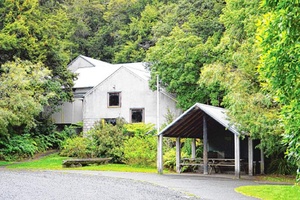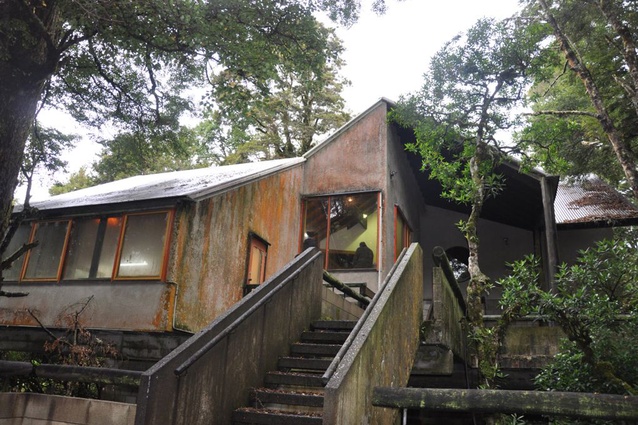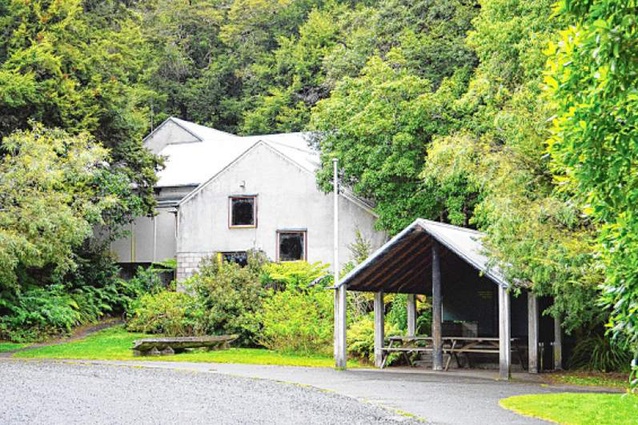Save John Scott’s Aniwaniwa Centre
The New Zealand Institute of Architects are urging the Department of Conservation to reconsider their recent decision to demolish the Aniwaniwa Visitor Centre, located at Lake Waikaremoana in Te Urewera National Park.
Designed by the late Māori architect John Scott, the Aniwaniwa Visitor Centre is a Heritage New Zealand Category One Historic Place.
The Institute of Architects president Christina van Bohemen says that the centre is “a unique building designed by a unique architect for a unique place. It strongly expresses some of the defining characteristics of John Scott’s architecture: concern for the land, a sensitive approach to site, and an innovative fusion of modern architecture and Māori building and design traditions.”
The 40-year-old Aniwaniwa Visitor Centre is one of the late John Scott’s crowning achievements – other significant buildings of Scott’s include the much-acclaimed Futuna Chapel in Wellington, the Martin House in Hastings and Our Lady of Lourdes Church in Havelock North. In 2015 John Scott’s professional eminence was further recognised by the New Zealand Institute of Architects when it named its top level national award for public architecture in his honour.
The decision to demolish the Visitor Centre was made by Department of Conservation deputy director-general Mervyn English. Ms van Bohemen poses, “Why is a public servant in a government department ordering the destruction of a building that a Crown entity values so highly? What sort of example does that set for the community and for owners of heritage buildings?”

The building was condemned as unsafe seven years ago because of weather tightness issues and earthquake susceptibility. While Mr English cites the poor condition of the Visitor Centre as reason for its demolition, Ms van Bohemen asks why the building has been allowed to deteriorate so severely in the first place. “Government departments are required to ensure that places of heritage value in active use are managed in such a way that the heritage values are maintained, and that the fabric of such places is not allowed to deteriorate while decisions about future use are made,” she says.
The irony that the centre was originally commissioned by the Department of Conservation itself is not lost on Ms van Bohemen. She says, “The Department is walking away from one of its own buildings, commissioned on behalf of the New Zealand public and paid for by the New Zealand public. It is always disappointing when Government agencies fail to protect the national legacy, but it is unforgiveable when they actively promote its destruction.”
The importance of Aniwaniwa is supported by the Registration Report that was prepared in 2012 for the New Zealand Historic Places Trust – now Heritage New Zealand Pouhere Taonga. The Report found that Aniwaniwa “features many elements of Māori architecture in its marae-based form”, and responds to “the immense importance of its surroundings through carefully considered form and pathways to honour the beauty and wairua of the landscape.”
Prior to the recent decision to demolish the centre, Julie Rowan, acting chief executive of Heritage New Zealand, commented that “the building is listed with Heritage New Zealand as a category 1 historic place in recognition of its historic, architectural, cultural and social significance. We have provided advice to the owners on the listing and the building’s significance to help them with their decision-making process in relation to the building’s future.”
“As the building is not scheduled on the Wairoa District Council’s District Plan, there is no requirement for a consent process to which Heritage New Zealand might be a party, however we are confident that advice provided to both the Council and the owner means those making a decision about the building’s future are aware of its heritage values,” she concluded.
It would appear that, on this issue, the Department of Conservation has not heeded the advice of Heritage New Zealand. The New Zealand Institute of Architects urges the Department to reconsider their course of action immediately.











